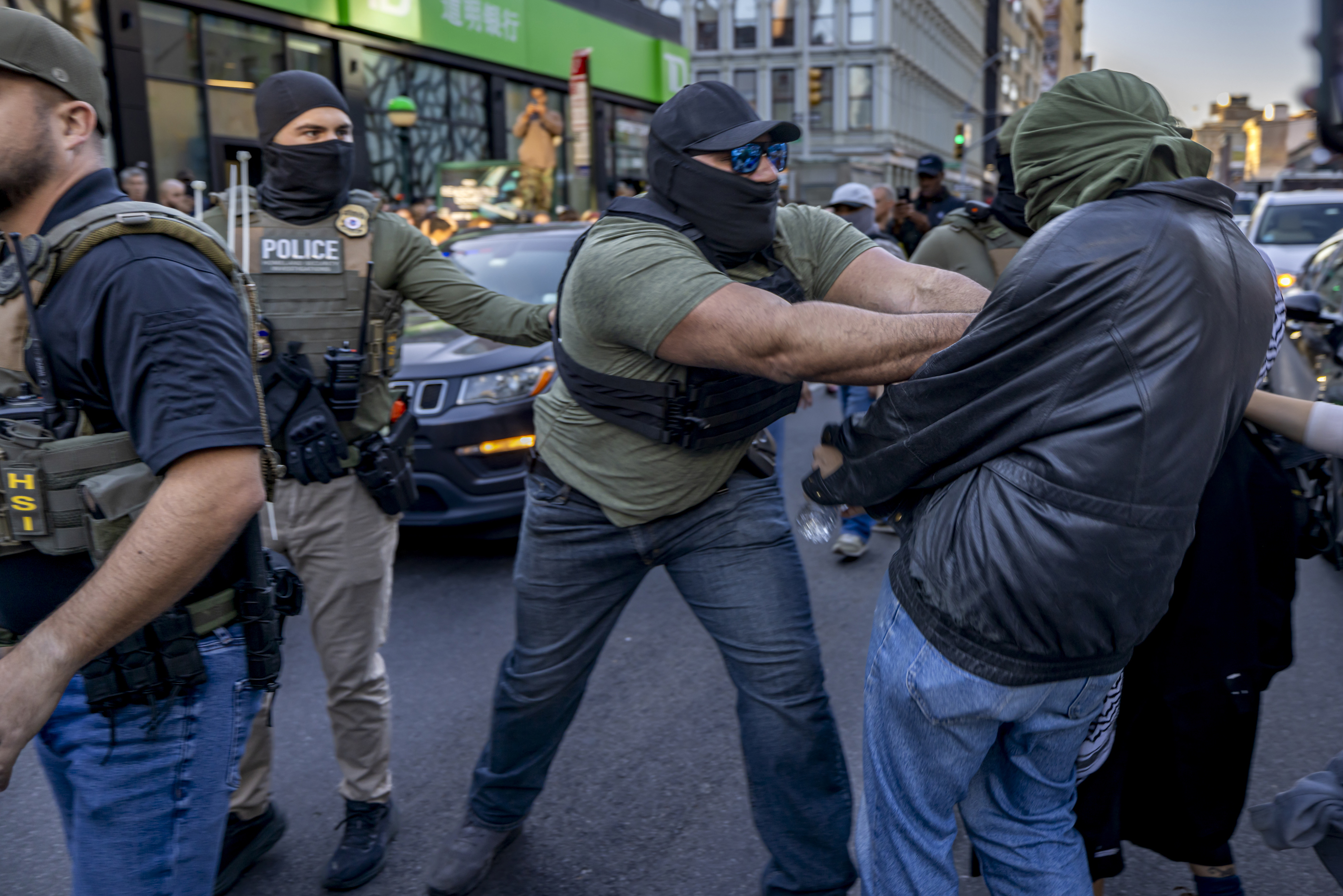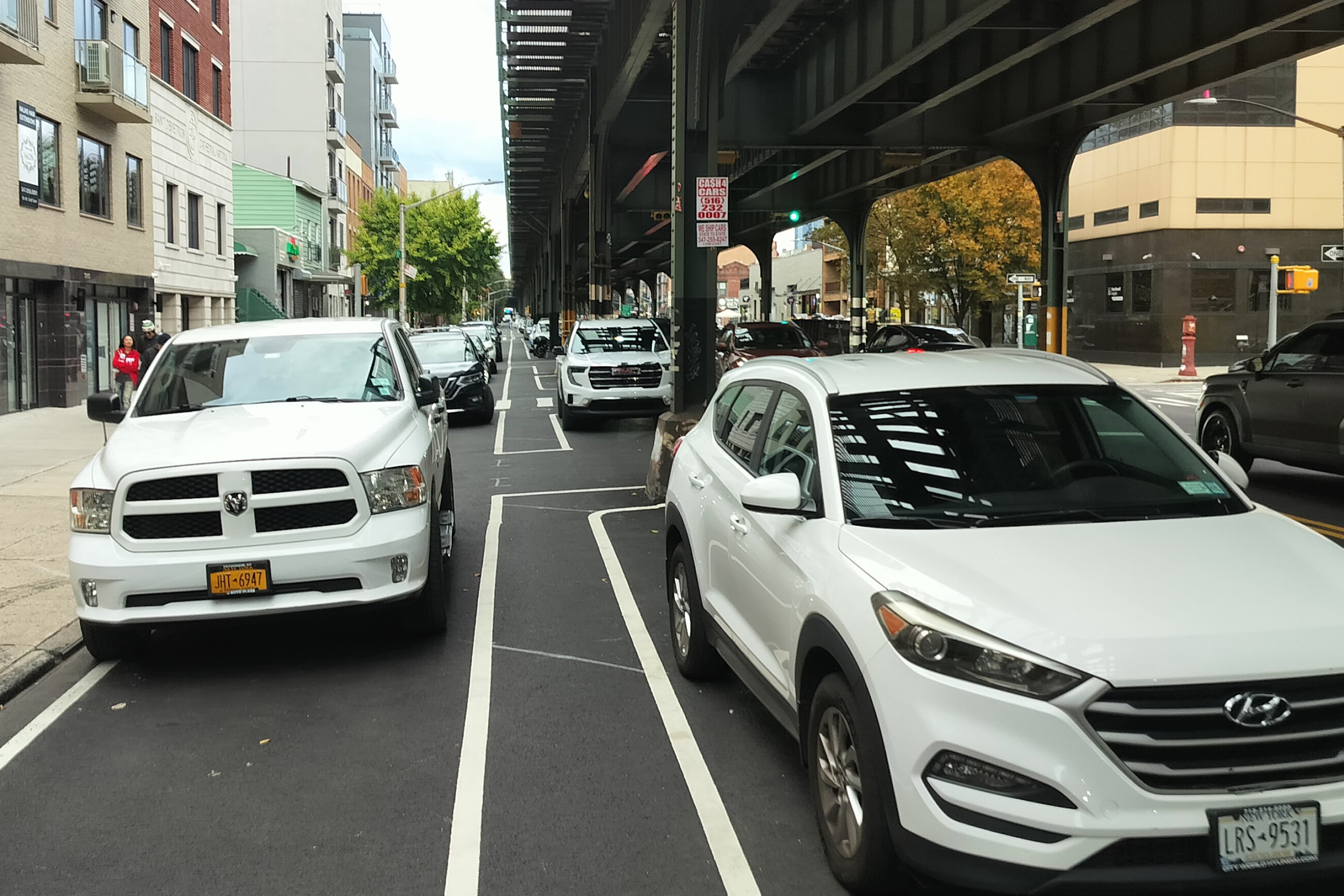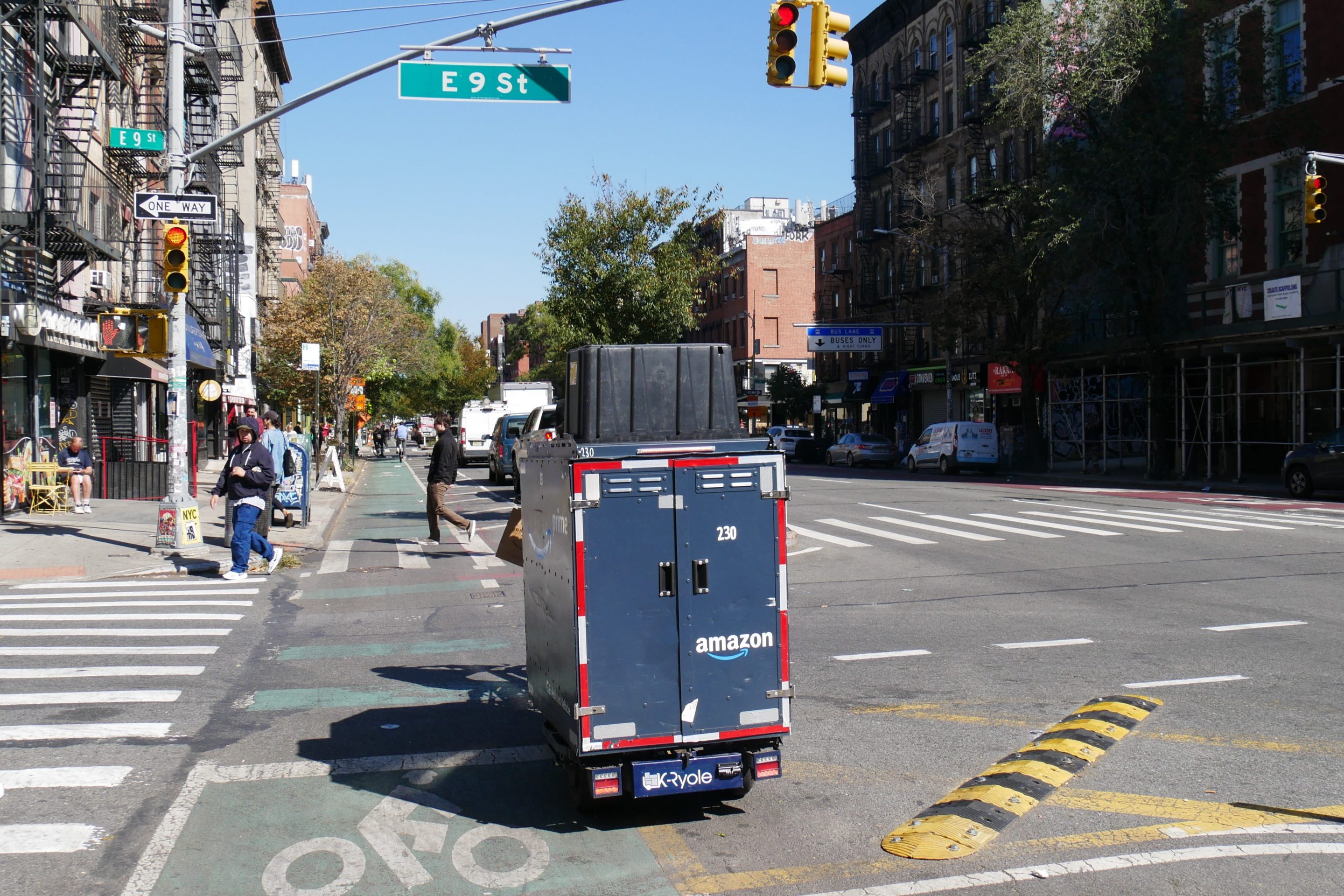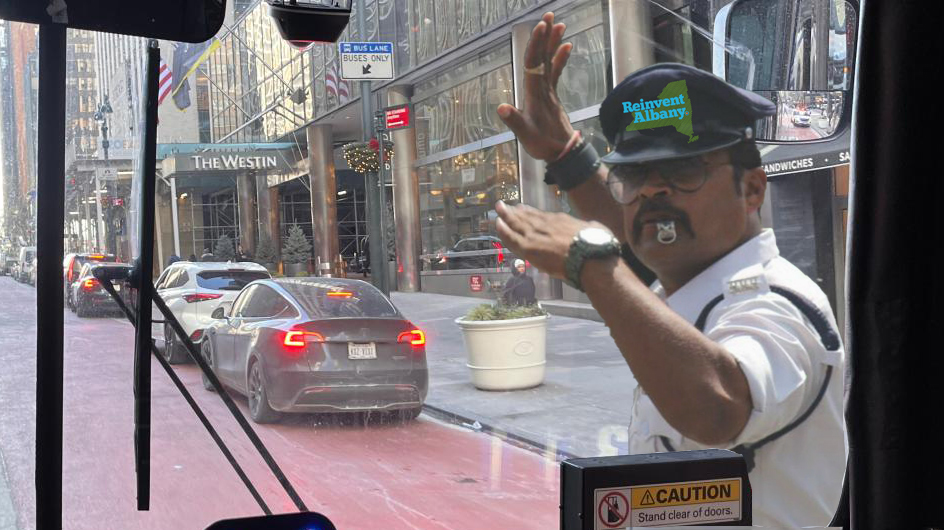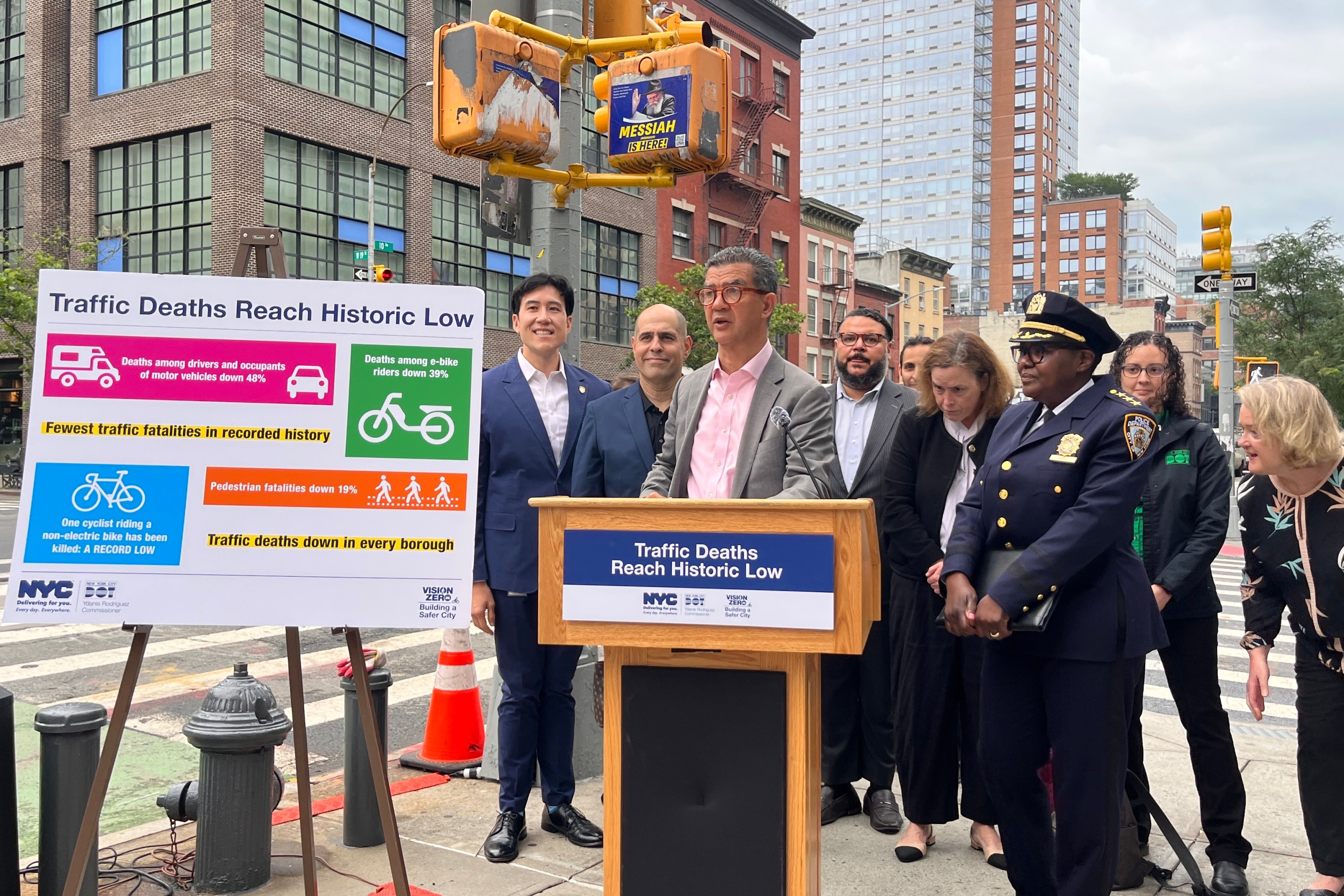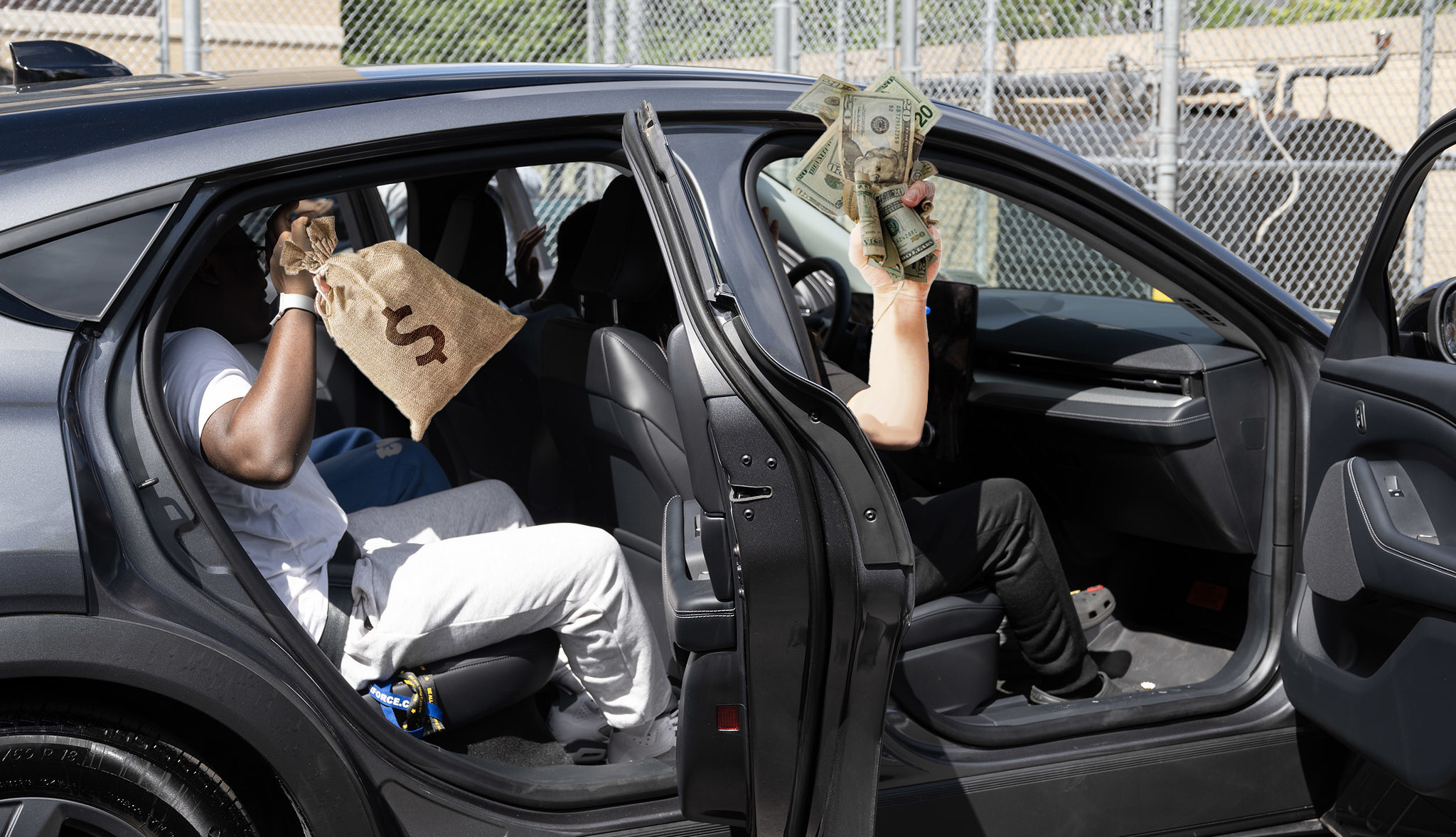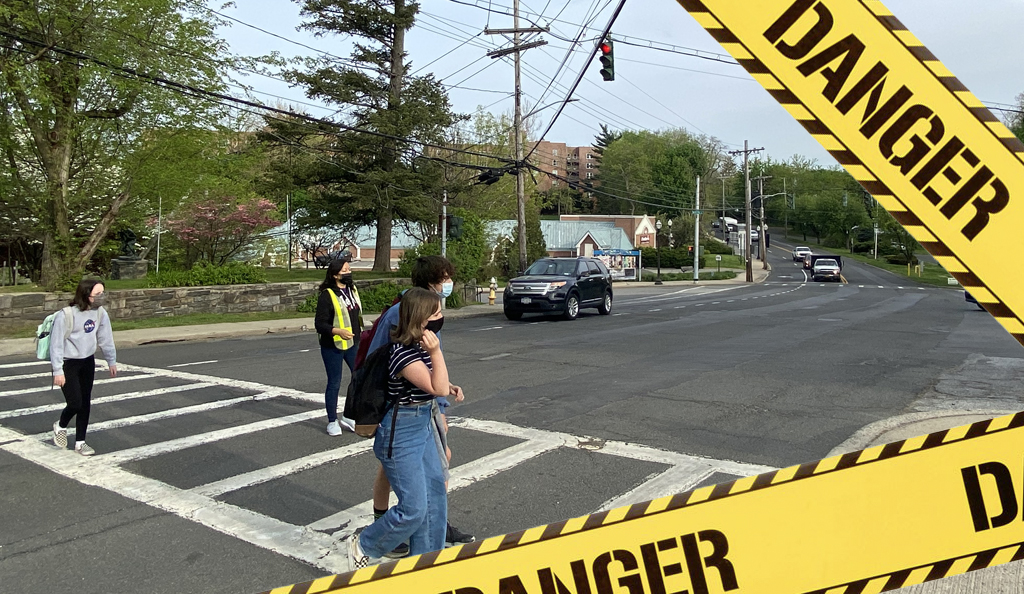Yeah? Who's going to stop him?
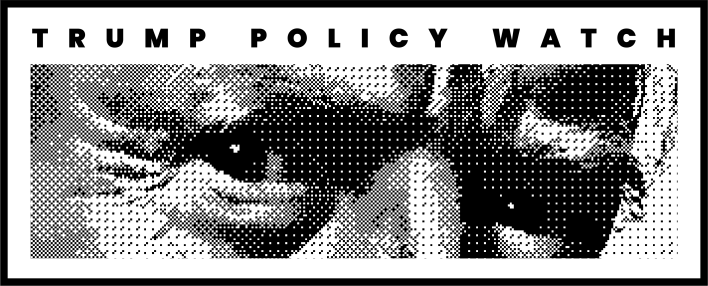
President Trump's heavily armed and masked immigration troops are turning American cities into battlegrounds — and when they did so in Lower Manhattan, on Tuesday, protesters rushed to the streets, where some were beaten, cuffed and arrested by the federal agents.
But where was the NYPD, whose mission is to protect protesters' right to free speech and, equally important, their safety? Answer: nowhere to be found.
That's by design. And it threatens to be a problem — of Constitutional proportions — if President Trump makes good on his promises to send more federal troops to New York City.
The right to assemble and protest government action is enshrined in the First Amendment. Historically, protests — whether it be over the Iraq War or the national political conventions, or housing development — have been local concerns overseen, however imperfectly, by local cops.
"Our job is to make sure that people can protest peacefully," said retired NYPD Detective Michael Alcazar, who is now an adjunct professor at John Jay College of Criminal Justice. "Of course, [people] have to protest peacefully, they can’t commit crimes, they can’t attack the federal officers."
But what about when those protesters are attacked by the feds? What about their ability to exercise their rights in public? What about something as simple as a New York cop preventing a New Yorker from being beaten by an armed, masked man affiliated with who knows what?
Andrew Cuomo, the former governor who hopes to be mayor, said during the Wednesday night debate that his NYPD would have intervened to stop the mayhem.
"We don't need ICE to do quality-of-life crimes. We don't need them to worry about illegal vendors," Cuomo said. "I would have called the President, and I would have said, 'Look, you're way out of bounds, they're way out of bounds, call them back or I'm going to have the NYPD step in and stop them because this is not their jurisdiction."
But experts say it's not simple — as evidenced by the usually gung-ho NYPD's press shy approach to a raid featuring more than 50 federal agents and even an armored vehicle to arrest several African men hawking knock-off luxury goods and its aftermath.
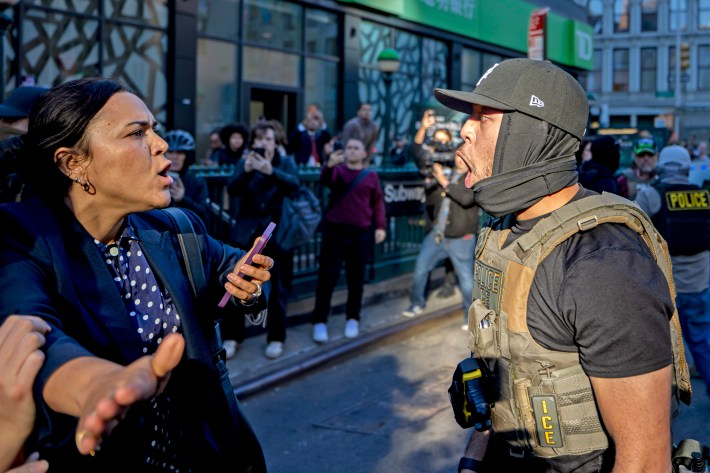
First, the department put out a one sentence statement on Twitter that it had "no involvement in the federal operation that took place on Canal Street this afternoon."
Afterward, the NYPD declined to respond to questions about its obligation to keep protesters safe as they exercise their First Amendment rights on streets that it famously claims it "owns."
This is the new abnormal: Masked federal agents pulling Tasers on protesters and chasing them down the street, or shoving a reporter covering the raid without warning. Abnormal, but apparently not a surprise these days.
"We've seen so many examples of ICE using excessive force against non-citizens, against protestors," said Molly Biklen, the interim legal director at the New York Civil Liberties Union. "It's just another example of the abuses of these efforts.
"This abusive and unconstitutional campaign is just absolutely running roughshod over people's rights," she added.
The larger context
It's not just New York, of course. Federal agents in Chicago shot tear gas and pepper pellets at protesters and reporters at immigration raids without warning. A federal judge ordered they stop. But the federal agents keep doing it — on Friday, they swept through a wealthy neighborhood on the North Side and violently clashed with protesters before driving off without any accountability.
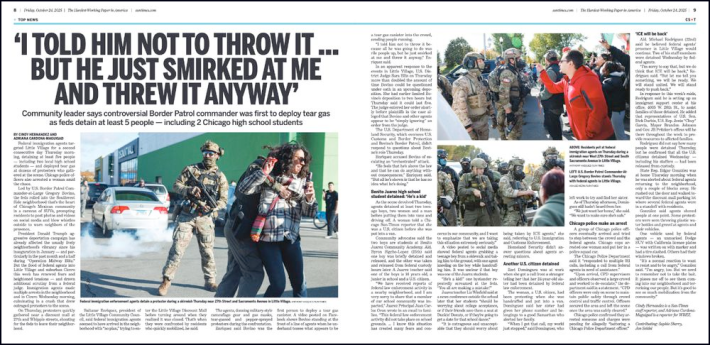
In Oakland, federal agents shot at least one flash-bang grenade out of a car with no warning as demonstrators marched near the Coast Guard base where ICE set up shop (a clergyman was injured).
And in LA and Portland, of course, President Trump mobilized the National Guard.
How does the First Amendment even work in that environment? In short, it doesn't — for very complicated reasons.
Longstanding federal law makes it illegal to "resist, oppose, impede," or "interfere" with federal agents performing official duties. In 2023, after accusations that the NYPD violated the civil rights of protesters and reporters during the George Floyd protests, the department signed a settlement that limited its actions.
So to this day, even as federal troops working for a president who has declared himself a "king" fight protesters violently in the streets, Biklen doesn't think the NYPD has a role.
"The police are not the answer to the right to protest," said Biklen, whose organization was a party to the 2023 settlement. "Adding more police officers to a situation does not make protesters safer."
Meanwhile, ICE is suggesting that its agents are the victims. "Everything was fine until those violent protesters showed up," ICE Director Todd Lyons told Fox News. And he promised more raids in New York City.
Those raids will bring more violence and, for now at least, no NYPD protection. It may seem like splitting hairs, given the NYPD's imperfections and own history of misconduct against peaceful protesters, but at least local cops display badge numbers and can be reported to a Civilian Complaint Review Board that investigates allegations of brutality. There's also an internal disciplinary process within the NYPD. And victims can sue over police misconduct, which costs the city tens of millions in settlements every year.
But Trump's agents aren't local. They're in masks and aren't publicly displaying identification, which means it's not clear who they are or to whom they report. They use aggressive tactics when confronted by protesters. They don't feel the need to de-escalate, as local cops are at least ordered to do.
For now, various jurisdictions are feeling their way through this Trump-made crisis of law-and-disorder.
In San Francisco, District Attorney Brooke Jenkins threatened to prosecute ICE agents who violate local and state laws, but acknowledged bringing cases would be "complex" and that she does not want local cops to arrest ICE agents. Instead, she says she will piece together agents' identities through videos and get a judge to sign off on warrants. It's not clear how this will work with many of the federal agents in masks.
In response, a Trump appointee to the U.S. Justice Department, Todd Blanche, threatened officials in California, including Jenkins, with prosecution for conspiracy and other charges if they follow through.
Blanche, a former Trump defense attorney, also cited a U.S. Supreme Court decision from 1890 that makes it effectively impossible to charge federal agents for violating state laws in the commission of their duties. (That case stemmed from a Wild West brawl in California in which a former California Supreme Court justice charged at a U.S. Supreme Court justice, whose body guard killed the attacker. The body guard was arrested for murder, triggering the legal battle).
The San Francisco DA is not alone in trying to use video tape to deliver accountability. New York State Attorney General Letitia James has also asked witnesses and protesters at the Tuesday melee on Canal Street to send videos to her office. And Illinois Gov. J.B. Pritzker signed an executive order on Thursday to create an "Accountability Commission" to collect evidence and testimony of the federal response.
But, the same day Pritzker issued his order, there was another immigration raid in the heavily Latino neighborhood of Little Village, which appeared to target a closed discount mall. Word quickly got out, protesters arrived and confronted the feds. The agents responded by tear gassing and pepper spraying protestors. They were in masks and armor. In another example of apparent futility, one of the agents captured on video tape throwing the tear gas was already set to be deposed in Chicago federal court over his treatment of reporters and protestors.
All of which portends it will happen here again.
“When people see something [like a raid], they say something. And New York style is, ‘Get out of my neighborhood!’" said Christina Greer, a professor of political science at Fordham University and a co-host of the prominent local podcast, FAQ-NYC.
“It’s gonna be a mess until [Trump] is out of office," she said.
